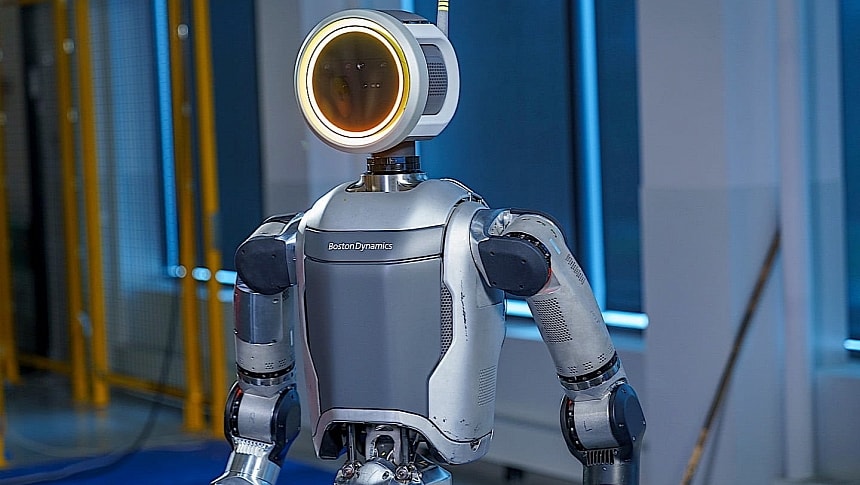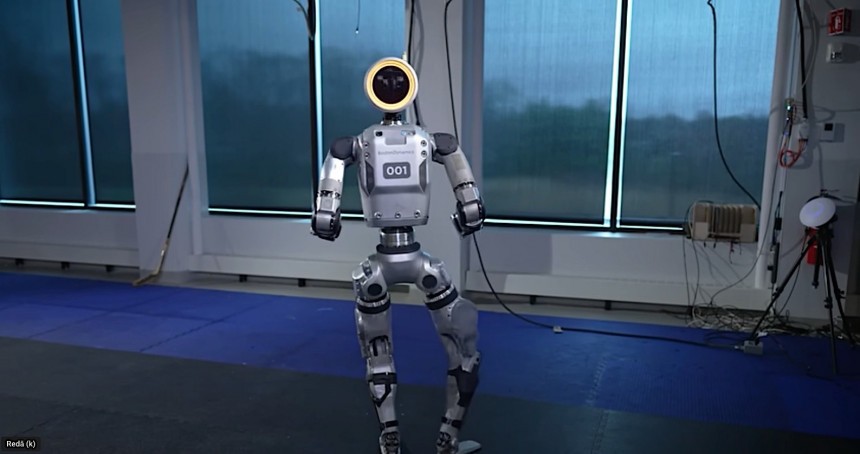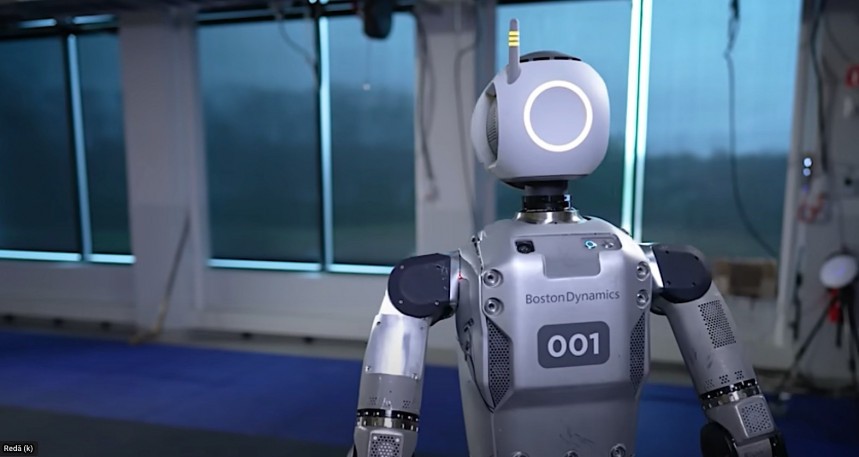Humanoid robots and the latest high-profile trend in the robotics industry. Although all sorts of other machines have been helping us perform daily tasks for decades now, bipedal metal creatures with arms are what will probably completely transform our world.
The reason for that is pretty simple: a humanoid is the most effective form we know of in this universe of ours capable of interacting in a proper manner with the world around us. Granted, that may be owed to the fact we built the world around us to fit our shape and capabilities, but the reality remains.
Contrary to what common sense would tell you, proper research and development into humanoid robots with real-world applications is only about a decade old. Sure, there've been companies and organizations that have been investing in such machines for longer, but many of them were only designing such tech for fun and games, mostly.
32-year-old American company Boston Dynamics started seriously looking into humanoid robots as tools for industrial applications in the 2010s, becoming by its own account "one of the only companies putting real R&D effort" into such things. All of that while it kept researching other kinds of robots as well, including a dog-shaped one the world has gotten to know as the Spot.
Boston Dynamic's humanoid robot is called Atlas. The thing first came into the spotlight back in 2013 as a result of a competition overseen by the DARPA. At the time, the machine was a little over six feet tall (1.8 meters, a little taller than the average human) and tipped the scales at 330 pounds (150 kg, a lot heavier than the average human).
Judging by what we know today to be possible, the original Atlas was kind of primitive, but it still packed an insane amount of hardware that made it capable of moving pretty much like a human, allowed it to keep itself upright when stuff was thrown at it in an attempt to make it fall over, and looked basically vicious.
Key to the robot's main capabilities was its ability to balance and move itself dynamically. You've surely seen what that means in the videos Boston Dynamics released since 2013 showing the Atlas perform all sorts of amazing actions, including doing parkour like it was its second nature.
With three robots in its portfolio already (the headless dog-like Spot, the industrial Stretch, and the humanoid Atlas), Boston Dynamics started attracting much attention from various industries. So much so, in fact, that one of the planet's largest carmakers, Hyundai, started investing in the company and in 2020 it outright bought the American robotics business.
Fueled by the confidence and investments coming from others, Boston Dynamics continued to refine the Atlas. The most recent version of the robot, made of titanium and aluminum 3D printed parts, had 28 hydraulically powered joints that allowed it to adapt to its surroundings. This version was also lighter and shorter than the DARPA variant, weighing just 196 pounds (89 kg) and standing five feet (1.5 meters) tall.
The robot's evolution culminated last week with the release of the most capable variant yet. And not just any variant, but one that replaces the hydraulic version of the Atlas with an electric one.
There are several main differences between the two robots, the most important of all being the fact that the robot's joints are now electrically powered. This approach should ensure the robot is stronger than before, will move in a way that exceeds human capabilities, and it should be capable of performing "with a broader range of motion than any of our previous generations."
The thing retains its ability to lift and maneuver loads, including irregular objects, but also the ability to navigate unstructured, difficult terrain that it did not know in advance. It also became more dexterous and agile, although we're not told for now exactly what that means in real-world applications.
The software that powers the robot is probably the same one as before, but Boston Dynamics plans to replace it with a new piece of technology called Orbit. Already deployed in the Spot robot, it's a suite of programs that should allow the Atlas to integrate its operations with those of other robots.
The most visually noticeable change the robot boasts now is the fitting of a light ring head. It's not an exact match to the Robot we've recently seen in the sci-fi TV series Lost in Space, but it's close enough to have those with a fear of a robot takeover of the world worried about possible enslavement.
Boston Dynamics made the new Atlas with a single goal in mind, and that is to serve the industrial needs of its users. We are not given the complete specs for the thing yet, but given how Hyundai will incorporate the humanoid robot into its carmaking operations in the near future, for testing purposes, we'll probably learn a bit more about it as time goes by.
And if you're worried about an immediate machine-driven end of the world, worry not. Boston Dynamics says it will take Hyundai years to test and iterate Atlas applications.
Contrary to what common sense would tell you, proper research and development into humanoid robots with real-world applications is only about a decade old. Sure, there've been companies and organizations that have been investing in such machines for longer, but many of them were only designing such tech for fun and games, mostly.
32-year-old American company Boston Dynamics started seriously looking into humanoid robots as tools for industrial applications in the 2010s, becoming by its own account "one of the only companies putting real R&D effort" into such things. All of that while it kept researching other kinds of robots as well, including a dog-shaped one the world has gotten to know as the Spot.
Boston Dynamic's humanoid robot is called Atlas. The thing first came into the spotlight back in 2013 as a result of a competition overseen by the DARPA. At the time, the machine was a little over six feet tall (1.8 meters, a little taller than the average human) and tipped the scales at 330 pounds (150 kg, a lot heavier than the average human).
Judging by what we know today to be possible, the original Atlas was kind of primitive, but it still packed an insane amount of hardware that made it capable of moving pretty much like a human, allowed it to keep itself upright when stuff was thrown at it in an attempt to make it fall over, and looked basically vicious.
With three robots in its portfolio already (the headless dog-like Spot, the industrial Stretch, and the humanoid Atlas), Boston Dynamics started attracting much attention from various industries. So much so, in fact, that one of the planet's largest carmakers, Hyundai, started investing in the company and in 2020 it outright bought the American robotics business.
Fueled by the confidence and investments coming from others, Boston Dynamics continued to refine the Atlas. The most recent version of the robot, made of titanium and aluminum 3D printed parts, had 28 hydraulically powered joints that allowed it to adapt to its surroundings. This version was also lighter and shorter than the DARPA variant, weighing just 196 pounds (89 kg) and standing five feet (1.5 meters) tall.
The robot's evolution culminated last week with the release of the most capable variant yet. And not just any variant, but one that replaces the hydraulic version of the Atlas with an electric one.
There are several main differences between the two robots, the most important of all being the fact that the robot's joints are now electrically powered. This approach should ensure the robot is stronger than before, will move in a way that exceeds human capabilities, and it should be capable of performing "with a broader range of motion than any of our previous generations."
The thing retains its ability to lift and maneuver loads, including irregular objects, but also the ability to navigate unstructured, difficult terrain that it did not know in advance. It also became more dexterous and agile, although we're not told for now exactly what that means in real-world applications.
The most visually noticeable change the robot boasts now is the fitting of a light ring head. It's not an exact match to the Robot we've recently seen in the sci-fi TV series Lost in Space, but it's close enough to have those with a fear of a robot takeover of the world worried about possible enslavement.
Boston Dynamics made the new Atlas with a single goal in mind, and that is to serve the industrial needs of its users. We are not given the complete specs for the thing yet, but given how Hyundai will incorporate the humanoid robot into its carmaking operations in the near future, for testing purposes, we'll probably learn a bit more about it as time goes by.
And if you're worried about an immediate machine-driven end of the world, worry not. Boston Dynamics says it will take Hyundai years to test and iterate Atlas applications.










